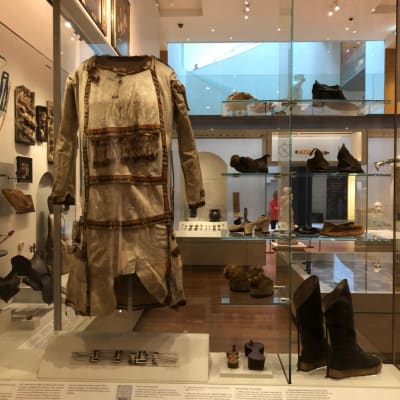
Wearing the Wunderkammer: A critical practice-led analysis of cabinets of curiosity, articulating the quality of curiosity and applying it to a fashion exhibition.
Cabinets of curiosities (wunderkammern) were private collections and spaces, usually owned by elite European men, dating from the 16th through the 18th centuries. Objects within them generally fell into one of two broad categories: naturalia (natural objects) and artificialia (man-made artefacts). Artificialia included items of fashion, primarily non-European, which were viewed as a means of learning about the customs and ceremonies of other cultures. I use the history of these cabinets and the objects collected within them as a starting point for my research, which centres on curating a contemporary exhibition of fashion within a museum setting. Through a focus on collections studies, decoloniality, analyses of fashion display, exhibition interpretation, and the application of psychological theories of curiosity, I am working to develop an original research framework that results in the creation an immersive, educational experience within the parameters of a public museum. My primary research questions include ‘What constitutes curiosity among museum visitors, and how can that quality manifest in fashion curatorial practice?’ and ‘How can cabinets of curiosities be used to develop ideas for critical engagement within a fashion exhibition?’.
Items of dress from John Tradescant's cabinet of curiosities, now in the collection of the Ashmolean Museum, Oxford.
Detail of the 'Ashmolean Story Galley', photograph by Colleen Hill.
To report inappropriate content, an infringement of copyright, or to report a problem on the Portfolio platform, please contact the Digital Team
